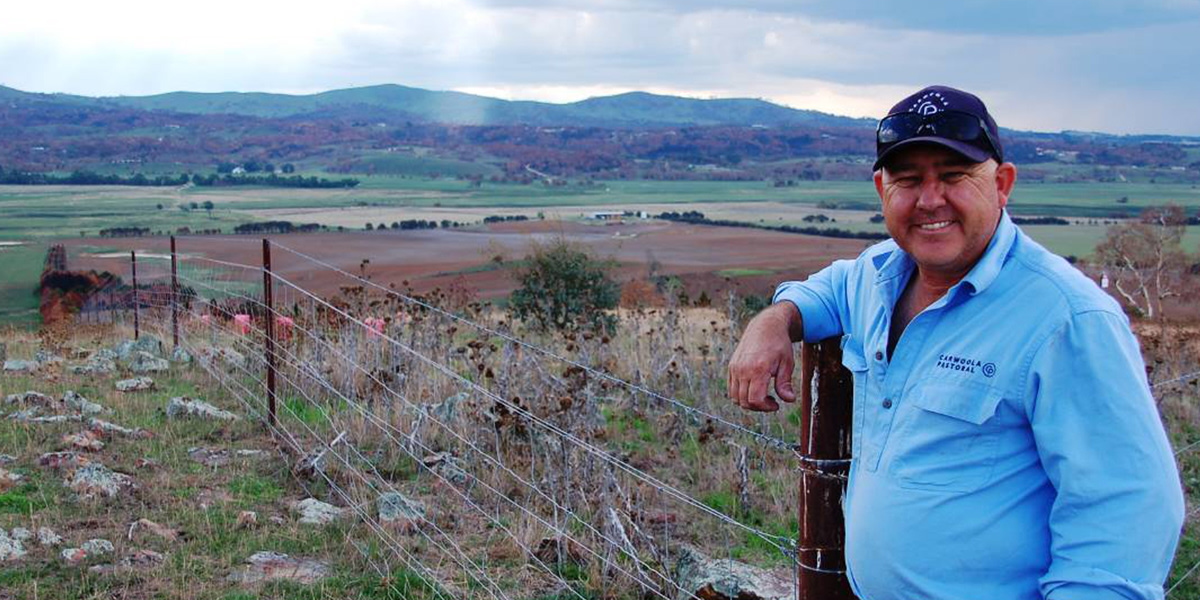
Are you searching for a solution to help monitor watering points on your livestock property?
You've landed on a solutions page on AgTech Finder that lists popular solutions, success stories, useful tips and more.
Scroll down to view agtech for Livestock producers.
Use the smart filters to select 'smart irrigation and water' to view (24) popular water monitoring solutions.
Or, read a few more success stories first...
Success Stories
Water monitoring technology has come a long way and is now much easier to install, use and maintain. There are now plenty of established companies offering different solutions including water level and depth monitoring, remotely monitored cameras, ultrasonic sensors and pressure sensors.
In these two success stories, owners of large remote livestock properties in Queensland and NSW explain how water monitoring technology has improved the way they manage one of their most important assets.
They share the costs of setup, provide some figures about their return on their investment, and explain how the agtech vendors they've been working with have provided complete packages that make financial sense even after factoring in the cost of installation, maintenance, connectivity and data.
Water runs take a lot of time and cost a lot in fuel. Leaks or other problems with your water tanks can cause bigger problems than just thirsty livestock.
Solutions you might want to consider may include a combination of:
water level sensors
rain gauges, weather stations, soil moisture probes
connectivity / gateway solutions
drone and aerial mapping
Read our two success stories for some ideas on where to get started.
Or, scroll to the bottom of the page for popular water monitoring solutions.

Success story #1
Calliope Station, a grazing property near Gladstone, Queensland.
Checking the water level in tanks and dams used to mean a full days trip on a four-wheeler for workers at Calliope Station, a grazing property about an hour out of Gladstone, Queensland.
The weekly water runs took a lot of time and a lot fuel, but they were essential to making sure livestock had enough water. Delays in picking up leaks or other problems could mean life or death for thirsty livestock.
Station owner, Will Wilson, joined up with Meat & Livestock Association, Hitachi and Vodafone in a proof-of-concept trial to test whether a digital water monitoring system could save him time, money and peace of mind.
The result was a resounding ‘yes’ on all three counts. The system was cash flow positive in 2.5 years with a cost saving of $54,555 after five years.
Get the full story | 3min read

Success story #2
Carwoola Pastoral Company, near Bugendore, New South Wales.
You may have read an article or two about the work that has been going on at this property - including one of the case studies from June last year featured on AgTech Finder about a project involving more than twenty agtech companies who put their hands-up to join an experiment to deploy their tech across the property.
The agtech project at Carwoola is only just passing the halfway mark and the technology being used on the property is already providing a return on investment and guiding management decisions.
The range of agtech devices from a range of different vendors are being put through their paces in a commercial setting. At the halfway mark, the project is revealing good news about just how reliable, robust and fit for purpose the tech is for a property like Carwoola.
Darren Price is overseeing the project and has been able to provide AgTech Finder with a snapshot of some of the many benefits the business has experienced.
Get the full story | 4min read

3 Tips for Water Sensors
1) Using Water Level Sensors for Concrete Reservoirs
In open concrete reservoirs, debris or algae drifting on the water surface can be absorbed into ultrasonic sensor pulses which results in a signal for an empty reservoir when it is actually full. Ultrasonic sensors that may be affected by debris can be replaced by water pressure sensors and this can solve the problem.
2) Using Water Level Sensors for Plastic Tanks
Ultrasonic sensors placed on the inside of black or dark green plastic tanks can be affected by small evaporation droplets accumulating on the surface of sensors. This results in readings for a full tank when it is actually nearly empty. To fix this try installing ultrasonic sensors on the outside of the tank and drill a large hole through the top for the sensor to poke through while still allowing for air to get in to prevent evaporation droplets forming.
3) Base Station Antenna Connectivity Line of Site
Base stations may needed to be fitted with high gain multi-directional antennas to get a strong enough data signal between the sensors installed at water tanks and dam locations and the base stations. Tall, dense trees are the most common obstruction so take a bit of care when planning the locations for base stations (there needs to be a clear line of sight to the gateways).

3 Popular Water Monitoring Solutions
1) Gallagher Wireless Water Monitoring System
A simple solution for monitoring and managing tank water. Easy to operate and install to let you know if there's water, to help prevent outages and to help manage water usage.
More information and contact details
2) Farmbot Remote Water Monitor
Farmbot water monitoring devices measure water levels in stock and storage tanks and sends you the data in height (cm), and as a percentage full.
More information and contact details
3) Observant Senix Ultrasonic Sensor
Observant offers water level monitoring for use in tanks, dams, channels and troughs, via a Senix Ultrasonic Sensor.
